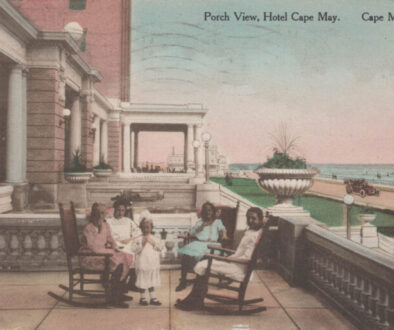The Waiting is the Hardest Part

Growing up in sub-tropical Miami, Florida, I could divide the year into wet and dry seasons, rather than the four distinct ones typical of temperate regions. If you had to, you could further dissect wet and dry into oppressively hot wet (or dry), and moderately hot wet (or dry). Spending my college years in Ithaca, New York, I finally experienced the full glory of the annual cycle, with four seasons punctuated by what appeared to be mostly distinct start and end times. I always found it amusing how temperatures dropping into the 40s in the fall seemed cold and warranted breaking out the box of winter wear stashed in the dusty attic. Meanwhile 40 degrees in March was reason to celebrate in your boxer shorts on the front lawn (in a beach chair, no less), the freshly thawed terrain pushing frigid groundwater against the weight of your feet and over the lip of your flip-flops, also fresh out of their winter dormancy.
Spring became defined by anticipation, and any sign was reason to celebrate. Every snowy walk was a search for the emergence of the first flower bulbs, be they crocuses or daffodils. Mornings were spent glued to the Weather Channel, searching for the first 50-degree evening with low wind, the telltale conditions when I knew I could trudge out into any nearby field or bog to witness the ceremonial courtship dance of the American Woodcock. A little later, as nighttime lows were above freezing, I would notice the disappearance of the sparrows who wintered at my feeders, and the arrival of the vanguard songbirds dependent on bugs rather than seeds, and therefore arriving from hundreds to thousands of miles to the south.
This year in Cape May, though, my anticipation is a bit more acute. Last January, after a vacation in Florida, we returned to find a female Ruby-throated Hummingbird trying to feed from one of our frozen feeders. Acting quickly, I swapped out that feeder—and two others—with fresh nectar, and after 10 minutes (that felt like more than hour), witnessed her return to feed. This continued through February, through the snowstorm that brought nearly two feet of snow, and more than a dozen nights with temperatures in the teens. Using both heated feeders and a system of bringing in a feeder after dark and returning it to the yard before first light, I managed to ensure at least one unfrozen feeder even during the coldest days. As of this writing she continues, but as each day goes by my anticipation grows. Anticipation for her to survive, to make it out of here with spring’s arrival. I only hope the feeders and local insect population sustain her until buds pop and native nectar sources become available again. Which brings me to my second source of anticipation.

Late last spring, as I planted many annuals and perennials in an attempt to establish a hummingbird and pollinator garden (most hummingbirds are pollinators, but most pollinators are not hummingbirds), I also cleared a small shady spot to plant some bare-root cuttings of several early spring species native to New Jersey: three species of Trillium, Jack-in-the-Pulpit, Solomon’s Seal, Mayapple and a few others. These are species not common to Cape May, but that remind me of the woods of my college days in Ithaca, and the woods around Rutgers, where my wife and I went to graduate school.
The thing about planting these in late spring is that they don’t produce above-ground material until the following year. All of the work I put into the planning and execution: preparing the soil, spacing the planting sites, planting the roots just so, and marking the locations to keep an eye on them over months of uncertainty, covering the site with what I hoped was enough organic material to insulate them with moisture through the summer and provide warmth in the winter, and finally watering them through some of the hottest, driest parts of the summer. Not a day goes by that I don’t think about them at least once, wondering what their little roots are doing. Are they growing? Will they make it?
By the time you read this I should know the answer to whether our hummingbird visitor—and the early spring plantings—made it through the winter. This year, instead of the whirring wings of woodcocks, my focus will be on the distinct and rapid hummingbird chirping, which I hear each morning as I head out for work, as she gleans tiny bugs from the warm spots on the conifers in the yard. In lieu of crocuses and daffodils, I will scan the leaf duff in the marked-off area of the side yard for tiny green leaves pushing skyward, in search of warm sunlight.
Regardless of any shift in focus from one sign of spring to another, I will undoubtedly find myself on a balmy 40-degree morning, walking in boxer shorts and flip-flops over soggy ground and cursing the frigid groundwater that punctuates my silly antics at each step: waiting, anticipating, and searching for that inevitable spring. ■



